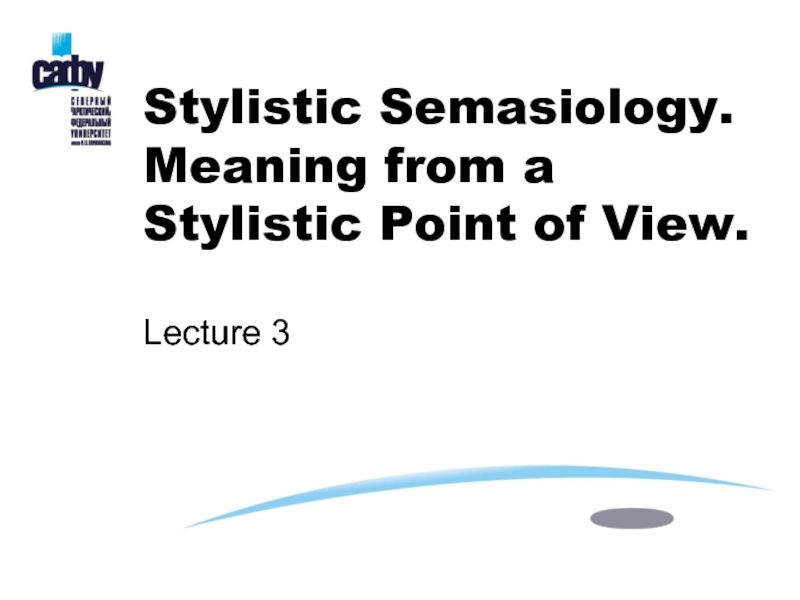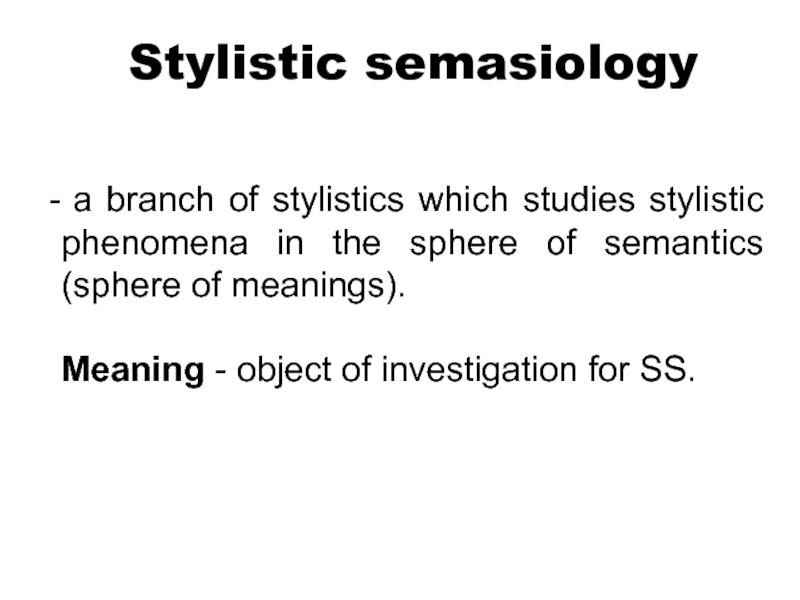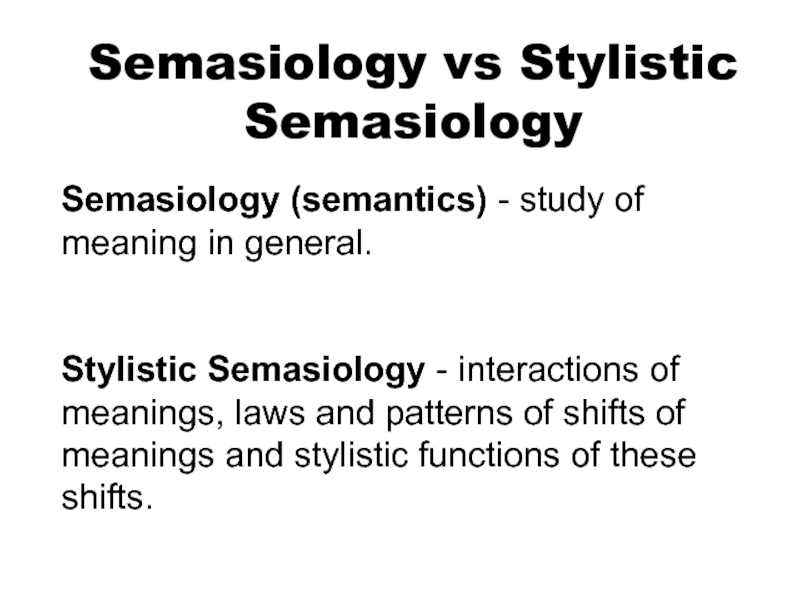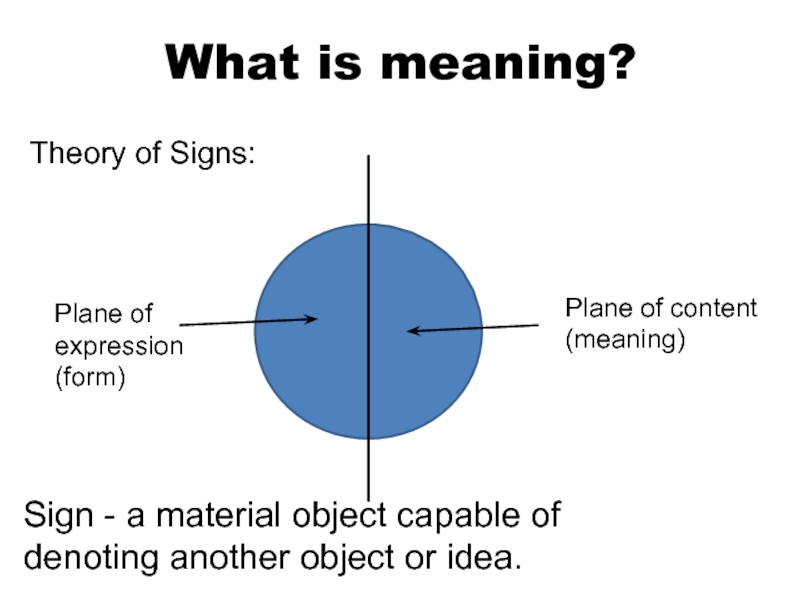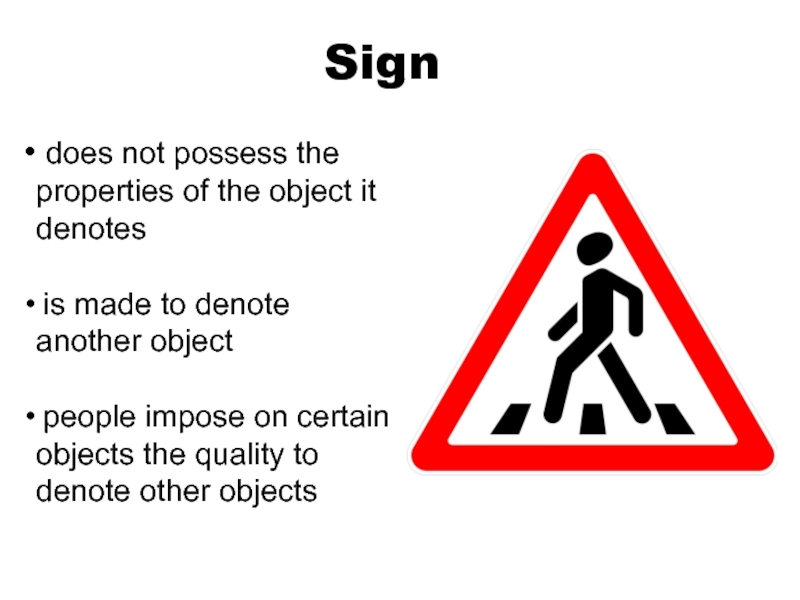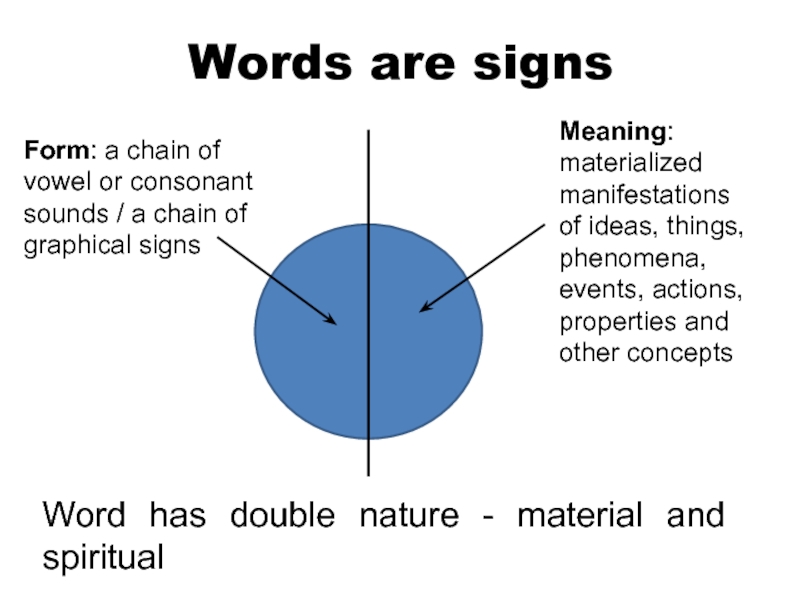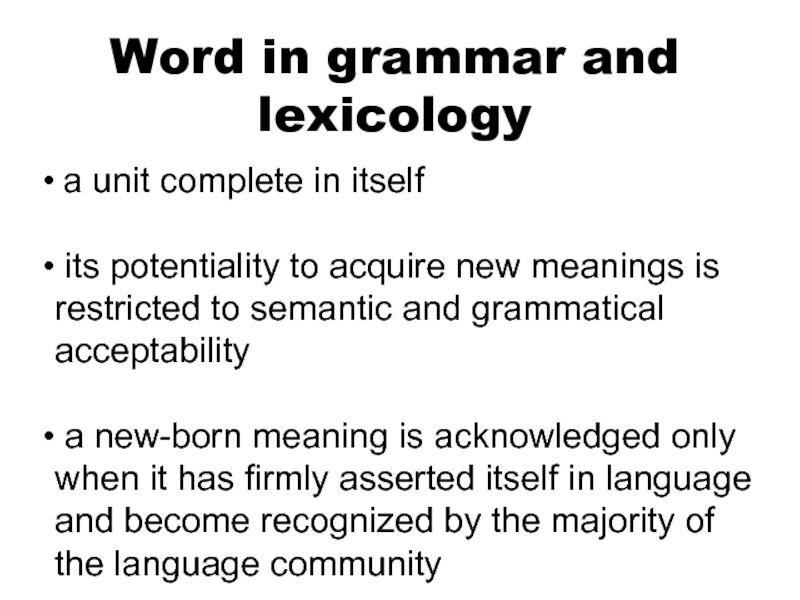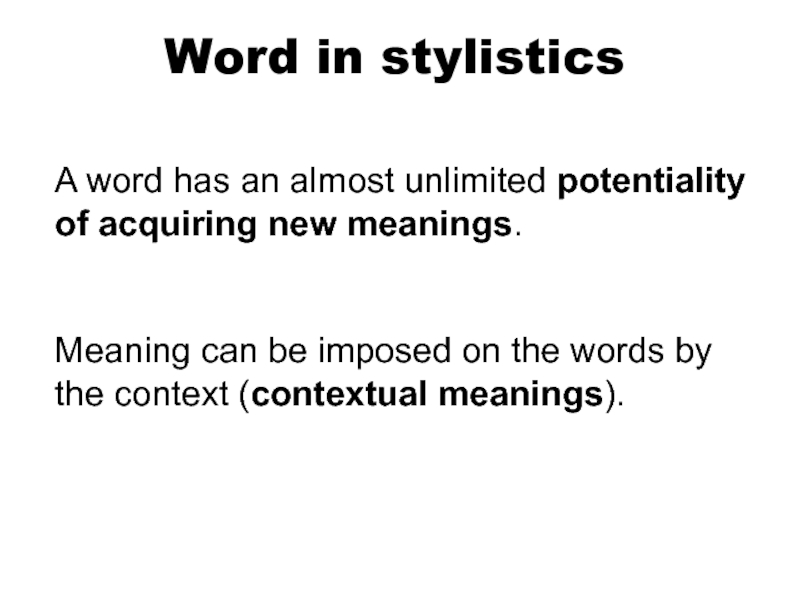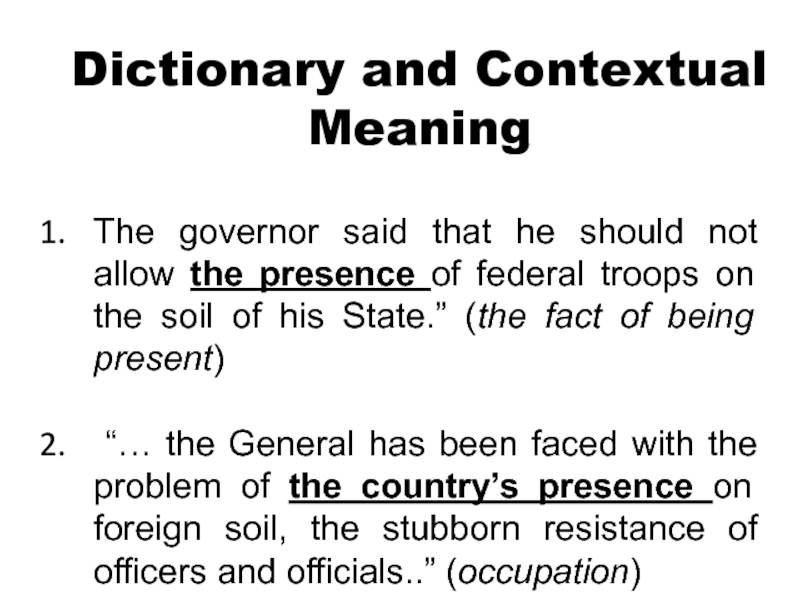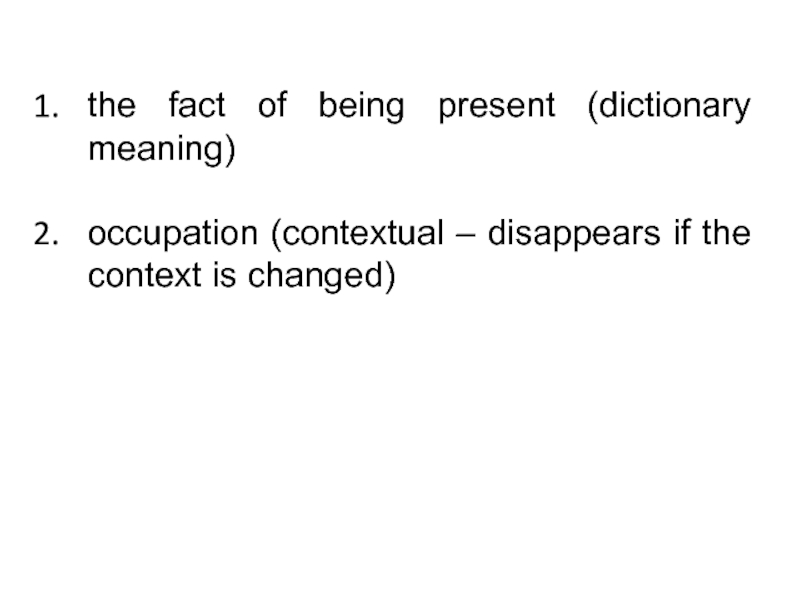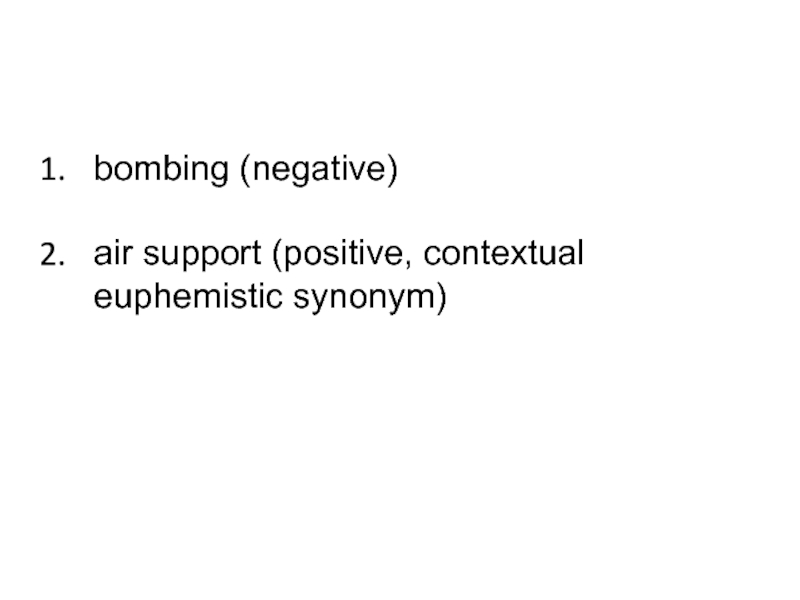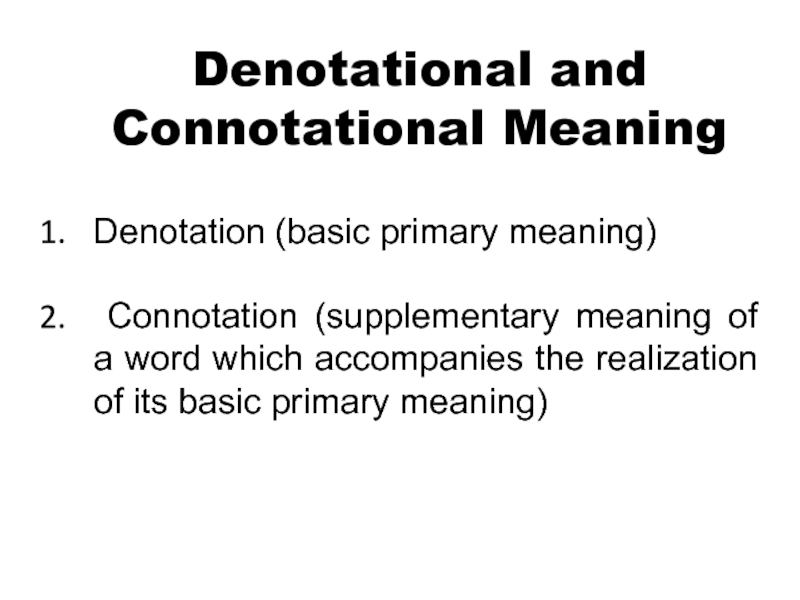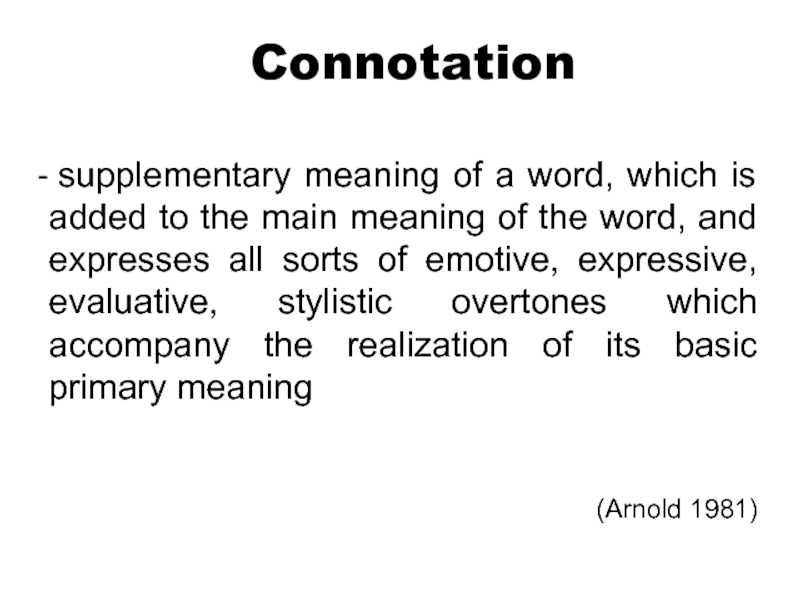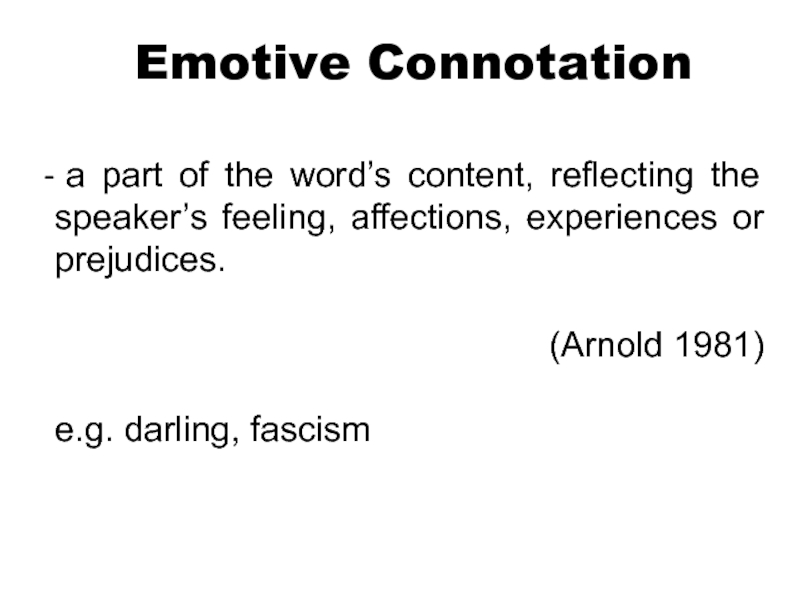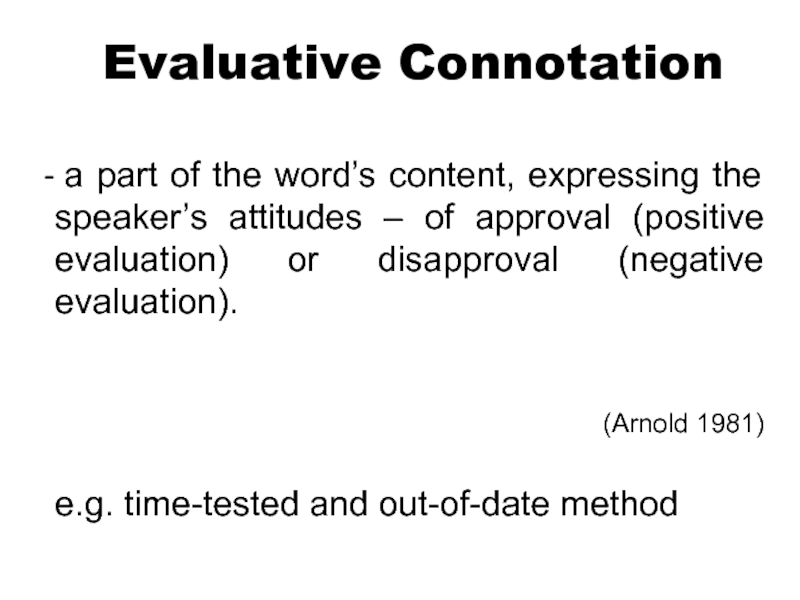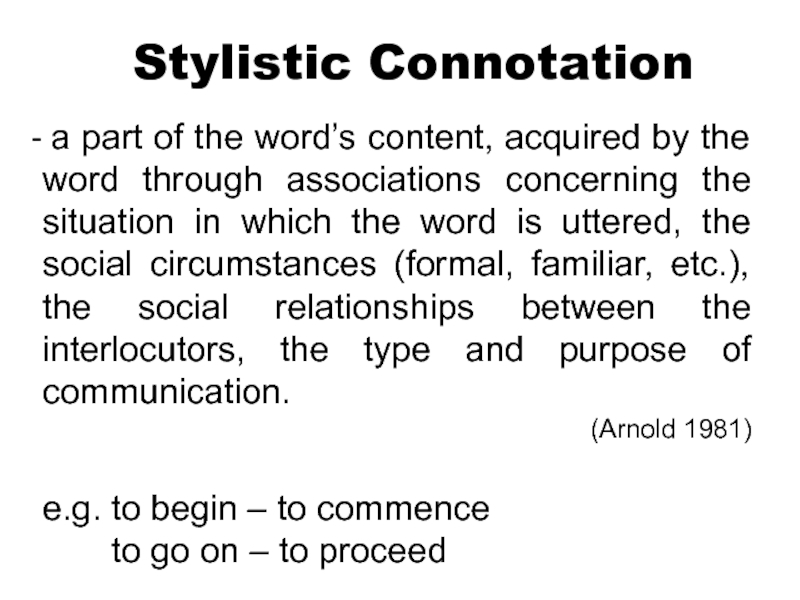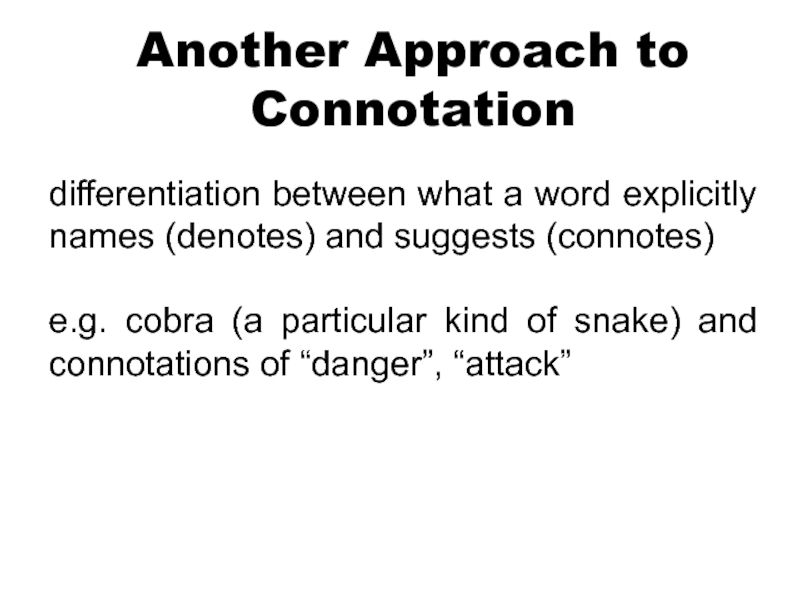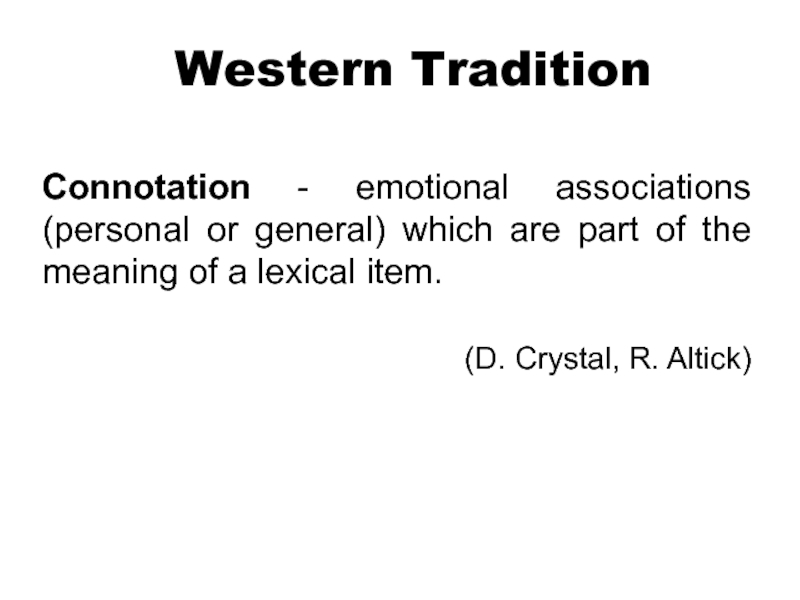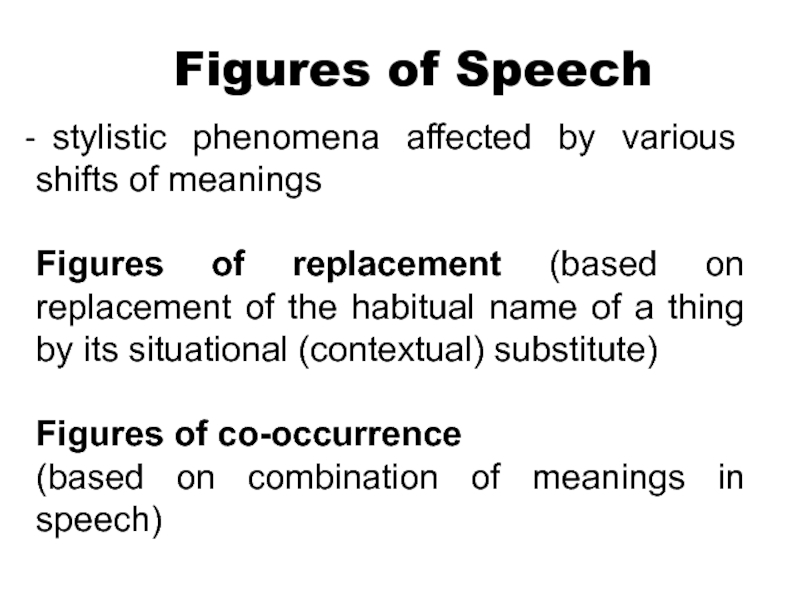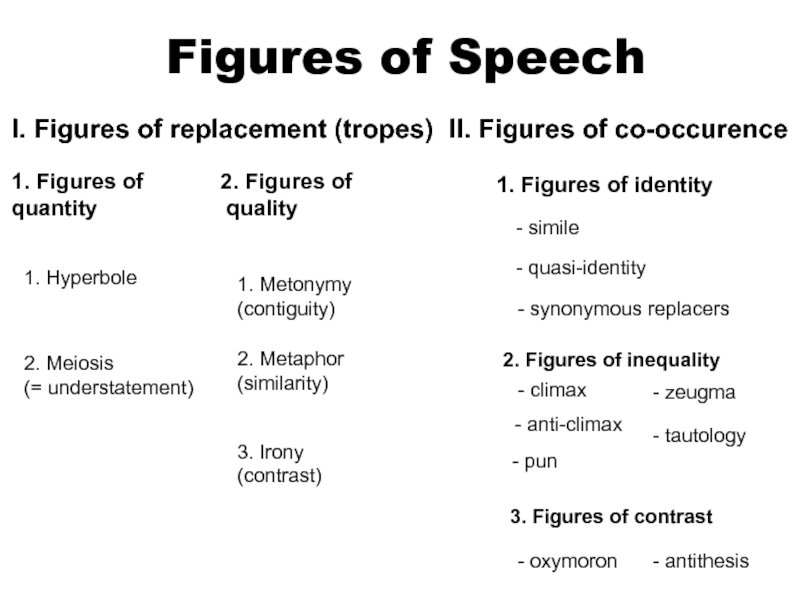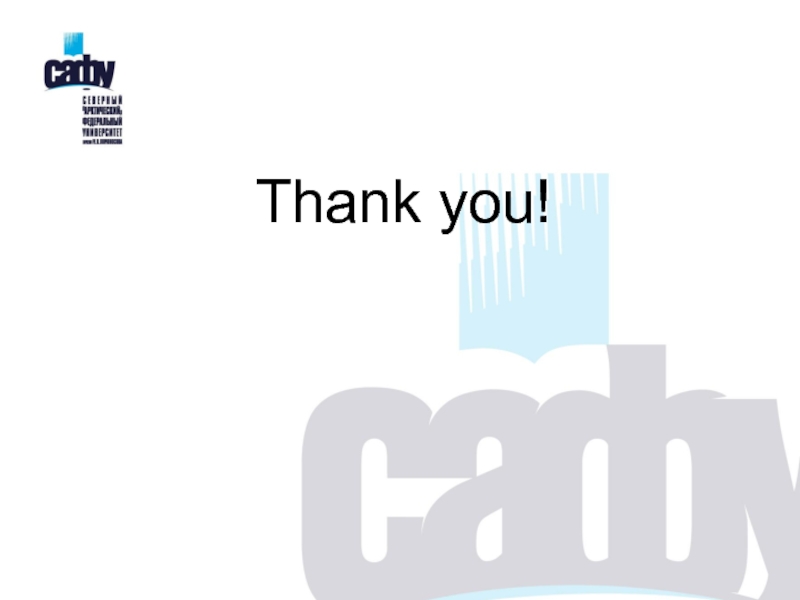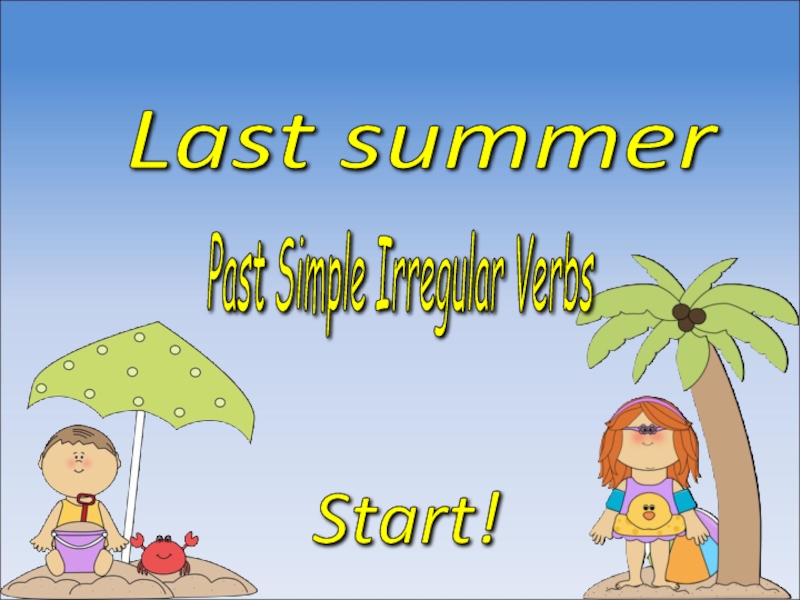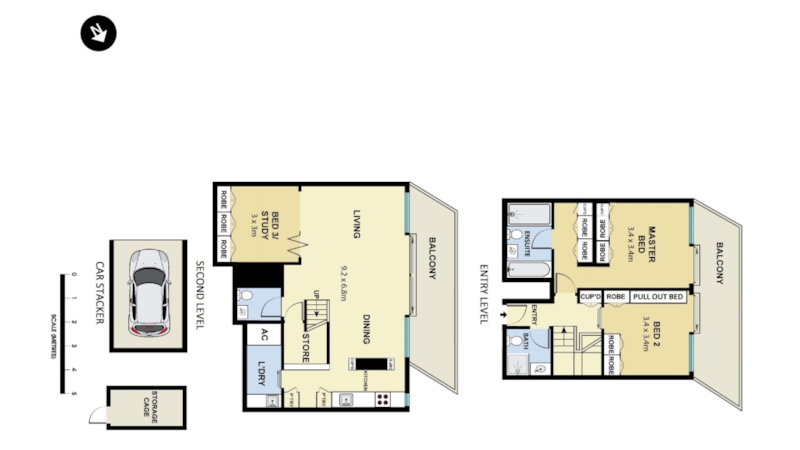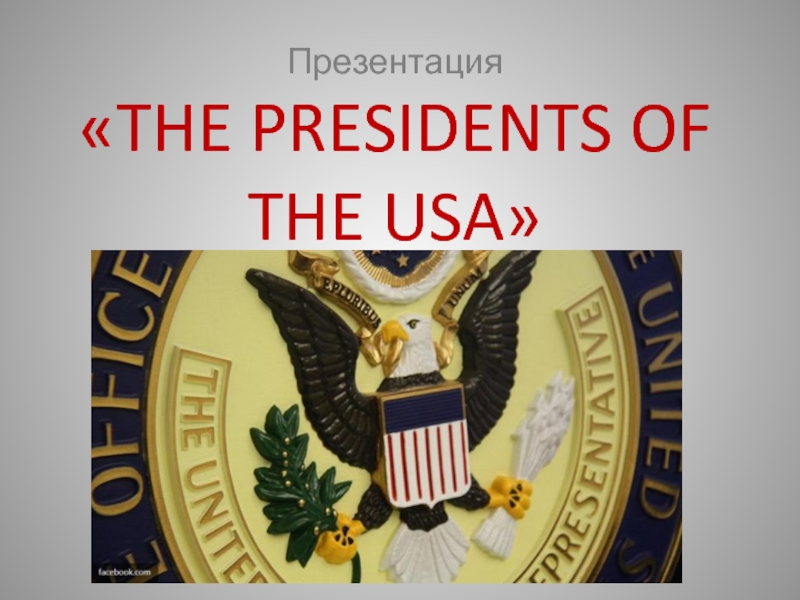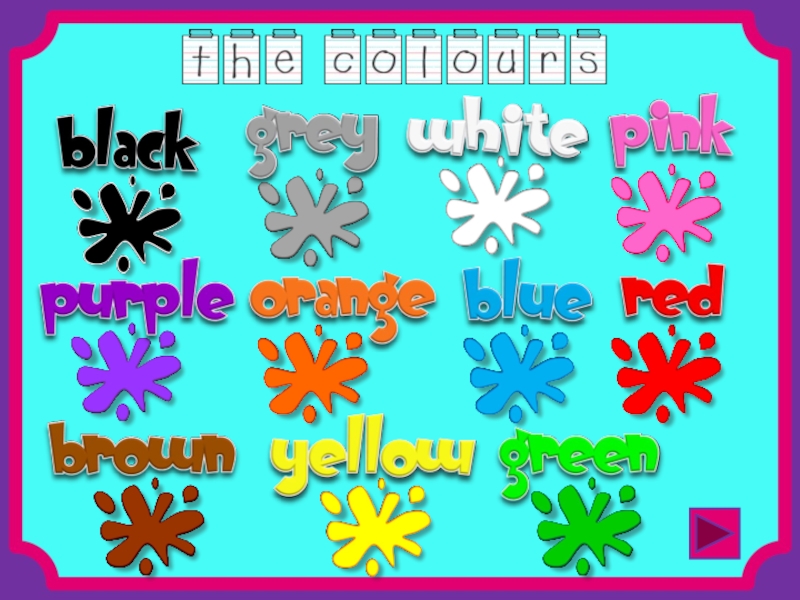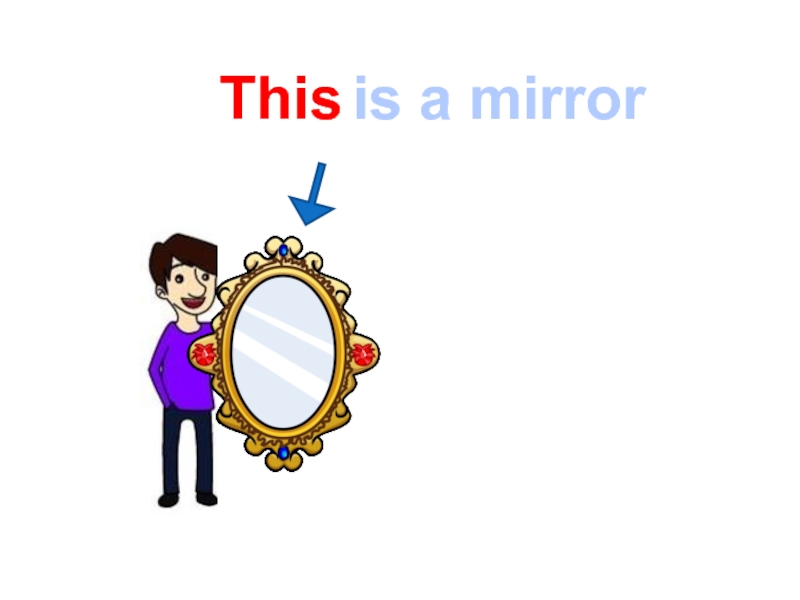- Главная
- Разное
- Дизайн
- Бизнес и предпринимательство
- Аналитика
- Образование
- Развлечения
- Красота и здоровье
- Финансы
- Государство
- Путешествия
- Спорт
- Недвижимость
- Армия
- Графика
- Культурология
- Еда и кулинария
- Лингвистика
- Английский язык
- Астрономия
- Алгебра
- Биология
- География
- Детские презентации
- Информатика
- История
- Литература
- Маркетинг
- Математика
- Медицина
- Менеджмент
- Музыка
- МХК
- Немецкий язык
- ОБЖ
- Обществознание
- Окружающий мир
- Педагогика
- Русский язык
- Технология
- Физика
- Философия
- Химия
- Шаблоны, картинки для презентаций
- Экология
- Экономика
- Юриспруденция
Stylistic semasiology. Meaning from a stylistic point of view. (Lecture 3) презентация
Содержание
- 1. Stylistic semasiology. Meaning from a stylistic point of view. (Lecture 3)
- 2. Stylistic semasiology a branch of
- 3. Semasiology vs Stylistic Semasiology Semasiology (semantics)
- 4. What is meaning? Theory of Signs:
- 5. Sign does not possess the properties
- 6. Words are signs Form: a chain
- 7. Word in grammar and lexicology
- 8. Word in stylistics A word
- 9. Dictionary and Contextual Meaning The
- 10. the fact of being present
- 11. bombing (negative) air support (positive, contextual euphemistic synonym)
- 12. Denotational and Connotational Meaning Denotation
- 13. Connotation supplementary meaning of
- 14. Emotive Connotation a part
- 15. Evaluative Connotation a part
- 16. Stylistic Connotation a part
- 17. Another Approach to Connotation differentiation
- 18. Western Tradition Connotation - emotional
- 19. Figures of Speech stylistic
- 20. Figures of Speech I.
- 21. Thank you!
Слайд 2Stylistic semasiology
a branch of stylistics which studies stylistic phenomena in
Meaning - object of investigation for SS.
Слайд 3Semasiology vs Stylistic Semasiology
Semasiology (semantics) - study of meaning in
Stylistic Semasiology - interactions of meanings, laws and patterns of shifts of meanings and stylistic functions of these shifts.
Слайд 4What is meaning?
Theory of Signs:
Sign - a material object capable of
Plane of expression (form)
Plane of content (meaning)
Слайд 5Sign
does not possess the properties of the object it denotes
people impose on certain objects the quality to denote other objects
Слайд 6Words are signs
Form: a chain of vowel or consonant sounds /
Meaning:
materialized manifestations of ideas, things, phenomena, events, actions, properties and other concepts
Word has double nature - material and spiritual
Слайд 7Word in grammar and lexicology
a unit complete in
its potentiality to acquire new meanings is restricted to semantic and grammatical acceptability
a new-born meaning is acknowledged only when it has firmly asserted itself in language and become recognized by the majority of the language community
Слайд 8Word in stylistics
A word has an almost unlimited potentiality of
Meaning can be imposed on the words by the context (contextual meanings).
Слайд 9Dictionary and Contextual Meaning
The governor said that he should not
“… the General has been faced with the problem of the country’s presence on foreign soil, the stubborn resistance of officers and officials..” (occupation)
Слайд 10
the fact of being present (dictionary meaning)
occupation (contextual – disappears
Слайд 12Denotational and Connotational Meaning
Denotation (basic primary meaning)
Connotation (supplementary meaning
Слайд 13Connotation
supplementary meaning of a word, which is added to
(Arnold 1981)
Слайд 14Emotive Connotation
a part of the word’s content, reflecting the
(Arnold 1981)
e.g. darling, fascism
Слайд 15Evaluative Connotation
a part of the word’s content, expressing the
(Arnold 1981)
e.g. time-tested and out-of-date method
Слайд 16Stylistic Connotation
a part of the word’s content, acquired by
(Arnold 1981)
e.g. to begin – to commence
to go on – to proceed
Слайд 17Another Approach to Connotation
differentiation between what a word explicitly names
e.g. cobra (a particular kind of snake) and connotations of “danger”, “attack”
Слайд 18Western Tradition
Connotation - emotional associations (personal or general) which are
(D. Crystal, R. Altick)
Слайд 19Figures of Speech
stylistic phenomena affected by various shifts of
Figures of replacement (based on replacement of the habitual name of a thing by its situational (contextual) substitute)
Figures of co-occurrence
(based on combination of meanings in speech)
Слайд 20Figures of Speech
I. Figures of replacement (tropes)
II. Figures
1. Figures of quantity
2. Figures of
quality
2. Figures of inequality
3. Figures of contrast
1. Figures of identity
1. Hyperbole
2. Meiosis
(= understatement)
3. Irony
(contrast)
2. Metaphor
(similarity)
1. Metonymy
(contiguity)
- simile
- quasi-identity
- synonymous replacers
- climax
- anti-climax
- pun
- tautology
- zeugma
- antithesis
- oxymoron
